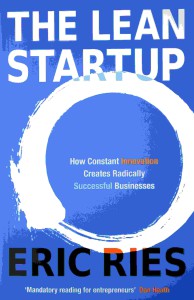The Lean Startup: Book Recommendation
I like to be on top of things by reviewing new books as they come out, so why am I reviewing a book that was published three years ago? Simply because the title misled me. I don’t run a startup and most of my readers don’t either, so I didn’t see a reason to read it.
But I had heard good things about The Lean Startup , so I decided to see what the fuss was about. The first point to make is that this book will profit anyone in business, from entrepreneurs all the way to bureaucrats in a vast organization. That’s because the definition of startup includes any new product, project or venture that requires acceptance by customers to succeed. (In my own case, I’m applying the principles to my writing projects and to a new market I’m focusing on—more of which in future posts.)
In my view, The Lean Startup is one of the most thoughtful and important books I’ve read in a long, long time. What’s not to like? So many of the topics I touch on in this blog and in my training are in here: clear thinking, customer focus, value, lean principles, and process orientation. The popular imagination tends to see entrepreneurship as a spark of genius, where someone turns a great idea or insight into a big business. But good ideas are often the least important part of the equation. Ries tells us that “…it’s the boring stuff that matters the most.”
The key idea is how to apply lean principles to startups. In a nutshell, lean is about eliminating waste, which is defined as anything that does not add value to the customer, using a very rigorous and data-driven approach. But in a startup, how do you define value when you often don’t even know who the end customer is? (And if you think you do, you’re probably way ahead of yourself—you’re operating on an untested assumption, to use Ries’ term)
The answer is that you measure progress toward the creation of value not through how the product is coming along, but by how much you’re learning about what customers will want and will pay for. After all, you can create a wonderful product full of all kinds of cutting edge features, and have it fall flat with customers. And it doesn’t do too much good to conduct focus groups to ask customers what they want because often they don’t know either.[1] Learning occurs through a cycle called the Build-Measure-Learn loop. You start with a hypothesis about what customers will value, then build a minimum viable product to test it, carefully collecting the right metrics that will lead to validated learning, then repeat as fast and as often as necessary.
Ries provides a very detailed road map through the Build-Measure-Learn loop using credible and compelling real world examples to illustrate such important concepts such as Minimum Viable Product, validated learning, innovation accounting, small batches, and Five Whys. It’s probably easier to grasp the concepts if you’ve had exposure to lean thinking, but if you haven’t, it pays to study the ideas closely—with a pen and paper at hand to write down all the good ideas that will spark in your mind.
My one quibble with the book is the definition of the word entrepreneur. Although I like the idea of defining a startup broadly, calling anyone who runs a startup, especially within a larger organization an entrepreneur is like blurring the distinction between the chicken and the pig when it comes to ham and eggs.
That quibble aside, I highly recommend this book.
[1] Ries doesn’t put it this way, but I see it as an ongoing dialogue between startup and customers, where you “say” something in the form of a product and see how the customer responds.



